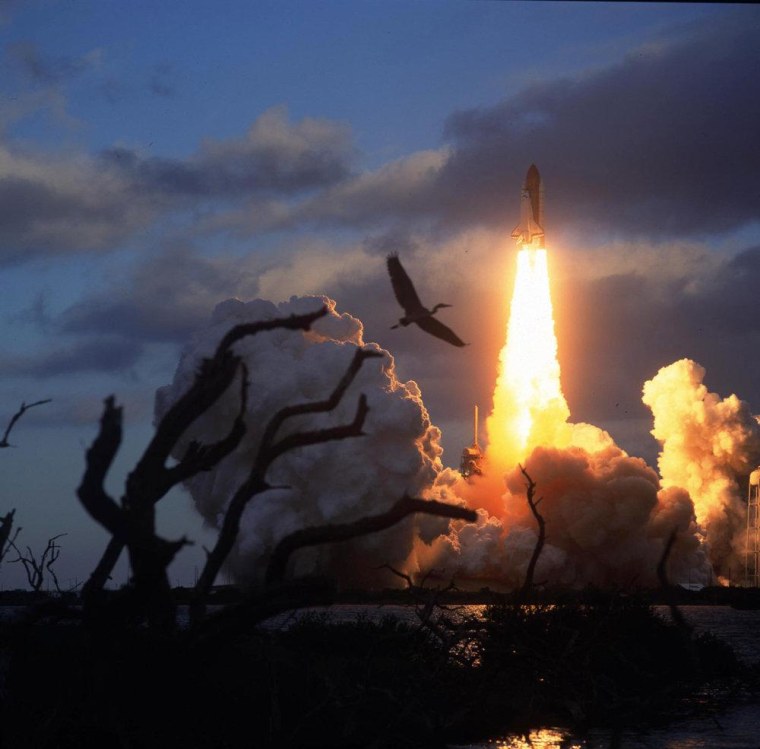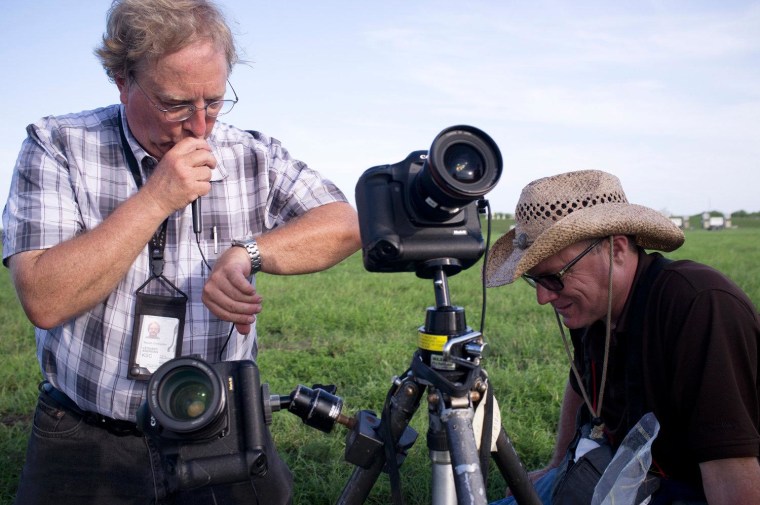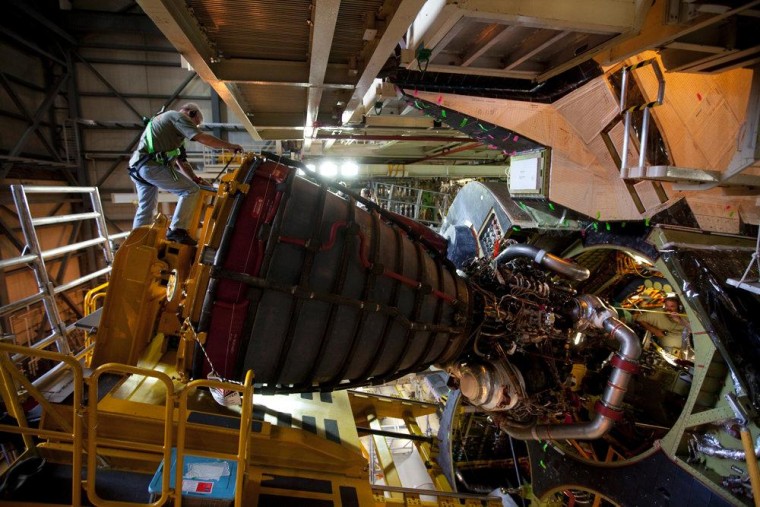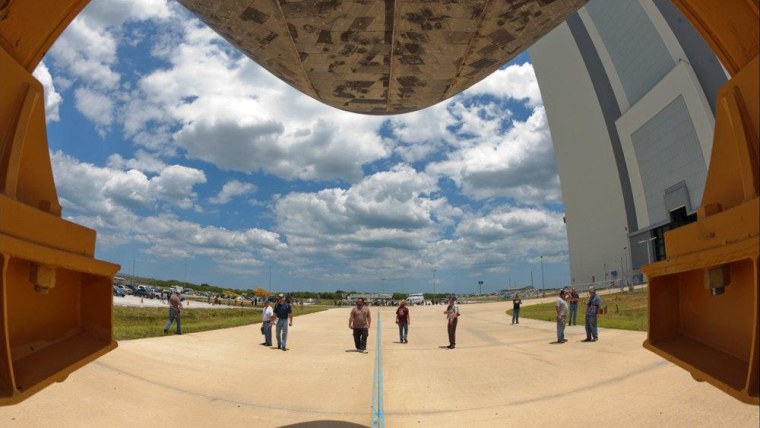If you've seen pictures of a shuttle launch, chances are you've seen the results of his handiwork. For more than 40 years, Scott Andrews has been photographing launches and landings, and he's aided hundreds of photographers from around the world.
In the field of event photography, the work required to document a shuttle launch or landing is particularly challenging. From standing chest-deep in alligator inhabited swamps to nearly drowning in quicksand, Andrews has fascinating and horrifying tales about the triumphs and perils of setting up automated remote cameras.

Early in Andrews' efforts to photograph the shuttle, sound triggers were a popular way to trigger remote cameras. He wanted a picture of the sparklers used to ignite the shuttle's main engines at ignition, but the sound wasn't sufficient enough to trigger the cameras. So he adapted a timer to coincide with the countdown. It was the kind of photo that had never been made before.
When the destination is a space station, the shuttle's launch window narrows from hours to just a couple of minutes. So he waited for a launch when the shuttle was going to Russia's Mir space station. With a timer set two minutes before the launch window, his camera started taking four-second exposures on a 36-exposure roll of Fuji Velvia. This enabled him to take just enough frames to capture ignition before running out of film.

Running out of film isn't the only problem Andrews has faced. Cameras have to be set out long before a launch, sometimes as much as a week early. After cool and humid Florida nights left many cameras with dew-covered lenses, he devised a way to prevent condensation from forming on them. Though he touts the invention as really low-tech, the idea is ingenious. He uses a series of electrical resistors hooked up to a wheelchair battery to warm the lens above the dew point. It's the same simple concept used in electric blankets, but it keeps lenses free of condensation so the pictures come out as crisp and clear as can be.

His innovations don't stop there. He's designed a remote trigger with a time delay built in to conserve memory (or film, back in the day). When the shuttle’s ignition sequence begins, the main engines ignite six seconds before the solid rocket boosters. This is why Andrews built in the delay. Before digital photography, not having a six-second delay meant a camera trigger would expend half a roll of film or more before the shuttle lifted off.
Sometimes his inventions are just reimagined uses of existing technologies — for instance, adapting an oil exploration technology called the geophone, which converts seismic energy (vibrations) into voltage. Andrews uses a geophone to trigger a camera at liftoff.
Not every story has a happy ending. One time Andrews stepped on a stingray that left him with a hole in his foot. The swamps and their brackish waters near Kennedy Space Center have also claimed a few of his cameras over the years.
Sometimes the challenges aren't technical, but involve gaining access to secure areas. This is where Andrews' intimate knowledge of NASA and the spaceflight program comes into play. After hatching an idea for a time-lapse video, Andrews had an idea to mount a camera in a precarious spot over the wing of the shuttle. Understanding the risks involved, he talked to people who could help him work out the safety issues before asking for the access he needed.

Andrews even went so far as to get engineering diagrams outlining the physical limits of the gear he was using, and he made backup tethers from aircraft safety cable. All these measures helped build trust, which opened doors to areas where others couldn't go.
"A lot of people barge in last minute, but I go in for a week without taking a single picture," Andrews said.
Finally a crane operator said, "Hang it right under the nose of the shuttle!" So he did.

And that's how it went: Scott pulled together his son, Philip Andrews, and Stan Jirman and drafted a lengthy proposal for a time-lapse video. He made six trips to Kennedy Space Center for the project. The resulting time lapse incorporated more cool camera angles than he could have dreamed up on his own. Watch the video below:
More multimedia from the shuttle mission: